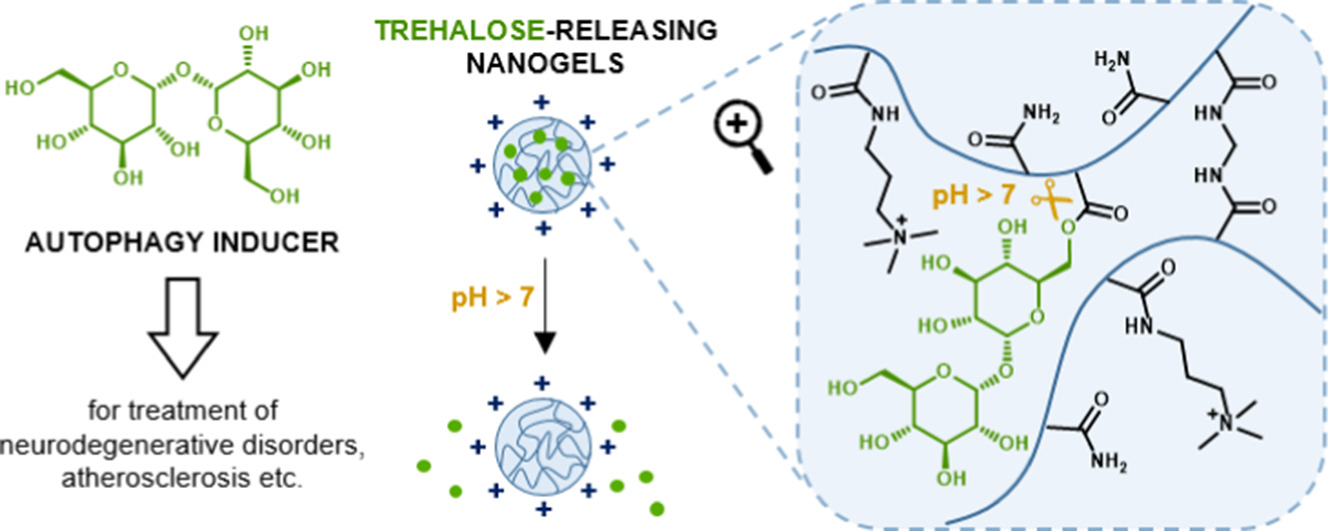Trehalose-releasing nanogels: A step toward a trehalose delivery vehicle for autophagy stimulation

Trehalose has been widely studied as a treatment for a variety of human disorders due to its ability to stimulate autophagy. Trehalose, however, is poorly adsorbed and is hydrolyzed in the intestinal mucosa, and oral delivery requires relatively high doses to induce autophagy. The parenteral injection of trehalose-releasing nanogels proposed in this study offers an alternative mode of delivery. This study aimed to develop stable colloidal dispersions of trehalose-rich nanogels that could sustainably release trehalose under physiologically relevant conditions. The nanogel design was based on the covalent incorporation of 6-O-acryloyl-trehalose within a polymer network. A series of nine trehalose-rich nanogels with highly conjugated trehalose (up to 59 % w/w) were synthesized and shown to sustainably release trehalose at a rate that is not dose dependent.
Highlights
- Nanogels containing covalently incorporated trehalose up to 59 % w/w were synthesized.
- Trehalose was sustainably released at pH > 7 at a rate that was not dose dependent.
- The nanogels were optimized to keep colloidal stability in serum-enriched media.
- The nanogels proved no cytotoxicity against HUVECs and no hemolytic activity on RBCs.
- In vivo studies proved that trehalose-releasing nanogels induce an autophagic activity.
The nanogels were optimized to keep colloidal stability in serum-enriched cell culture media. The stable nanogels were not cytotoxic to primary HUVECs. Two selected nanogels with opposite surface charges were subjected to extended in vitro characterization that included a cellular uptake study and a hemocompatibility assay. Both nanogels were efficiently taken up by HUVECs during a short incubation. They also proved not to be hemolytic to human RBCs in concentrations up to 2.0 mg/mL. Finally, an in vivo autophagy stimulation study employing transgenic zebrafish and Drosophila larvae demonstrated that prolonged exposure to a cationic trehalose-releasing nanogel can induce autophagic activity in in vivo systems without any detectable toxicity.
See the article here
Ali Maruf, Małgorzata Milewska, Tibor Kovács, Máté Varga, Tibor Vellai, Anna Lalik, Sebastian Student, Olga Borges, Ilona Wandzik,
Trehalose-releasing nanogels: A step toward a trehalose delivery vehicle for autophagy stimulation,
Biomaterials Advances, Volume 138, 2022, 212969, ISSN 2772-9508,
https://doi.org/10.1016/j.bioadv.2022.212969.

